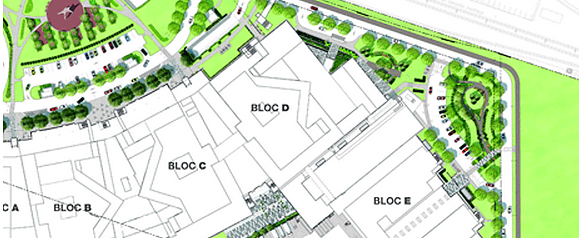Healing Gardens for our Patients
A unique garden will be planted along the periphery of the Cancer Centre and the Research Institute. In order to create a space for relaxation that is both soothing and rejuvenating, this Garden for the Senses will be composed exclusively of flowers, plants and trees that stimulate the five senses: sight, smell, taste, sound and touch.

Choosing which plants to use was not an easy task. The criteria were based on resistance to disease, the impact of de-icing salts and a focus on biodiversity. Plants also had to meet LEED criteria since the Glen site project is aiming for Silver certification. The selection therefore had to include plants that retain water, for example. High pollen producing plants were to be avoided, in order to maintain the calming aspect of the garden. Many plants already in use in urban settings were chosen for their easy upkeep. Finally, all parts of the plants in the tranquility garden had to be non-toxic (roots, trunk, leaves and fruit), given that taste was one of the senses to be stimulated.
How can a garden stimulate all five senses?
The velvety vinegar tree and Russian sage are known for their soft texture that appeals to the sense of touch. Flowers such as the lilac and the rose, meanwhile, stimulate the nose. The brightly coloured leaves of the willow and crab apple trees are visually captivating. Edible fruits such as the raspberry, gooseberry and black currant arouse the taste buds, while plants that rustle in the wind, such as red pine, quaking grass and deciduous plants in general, excite the ears.